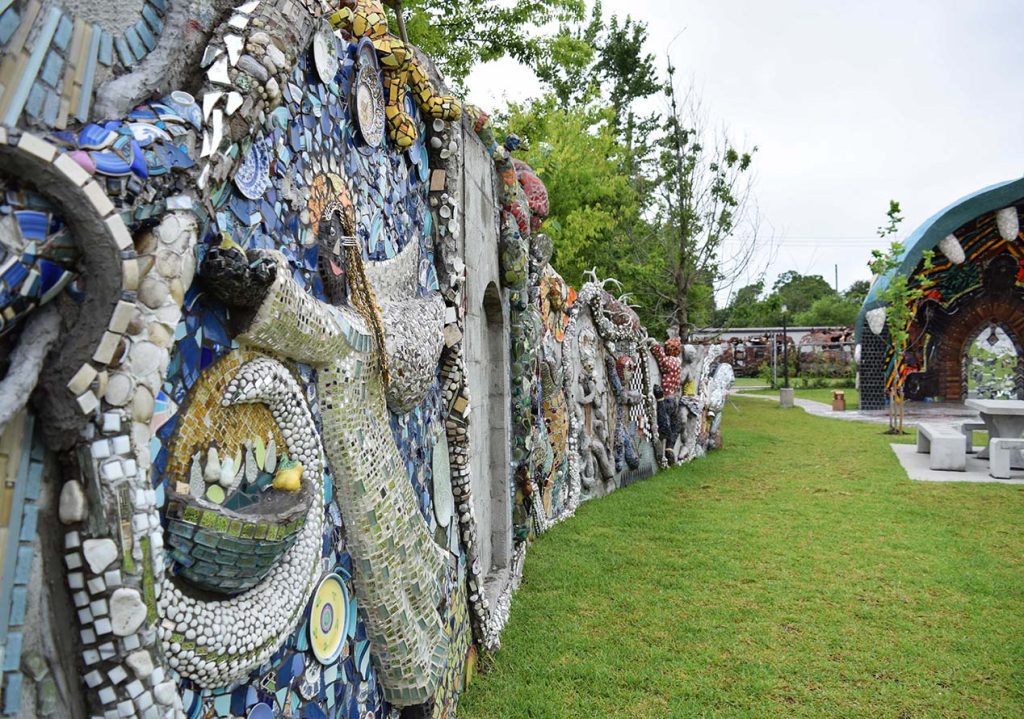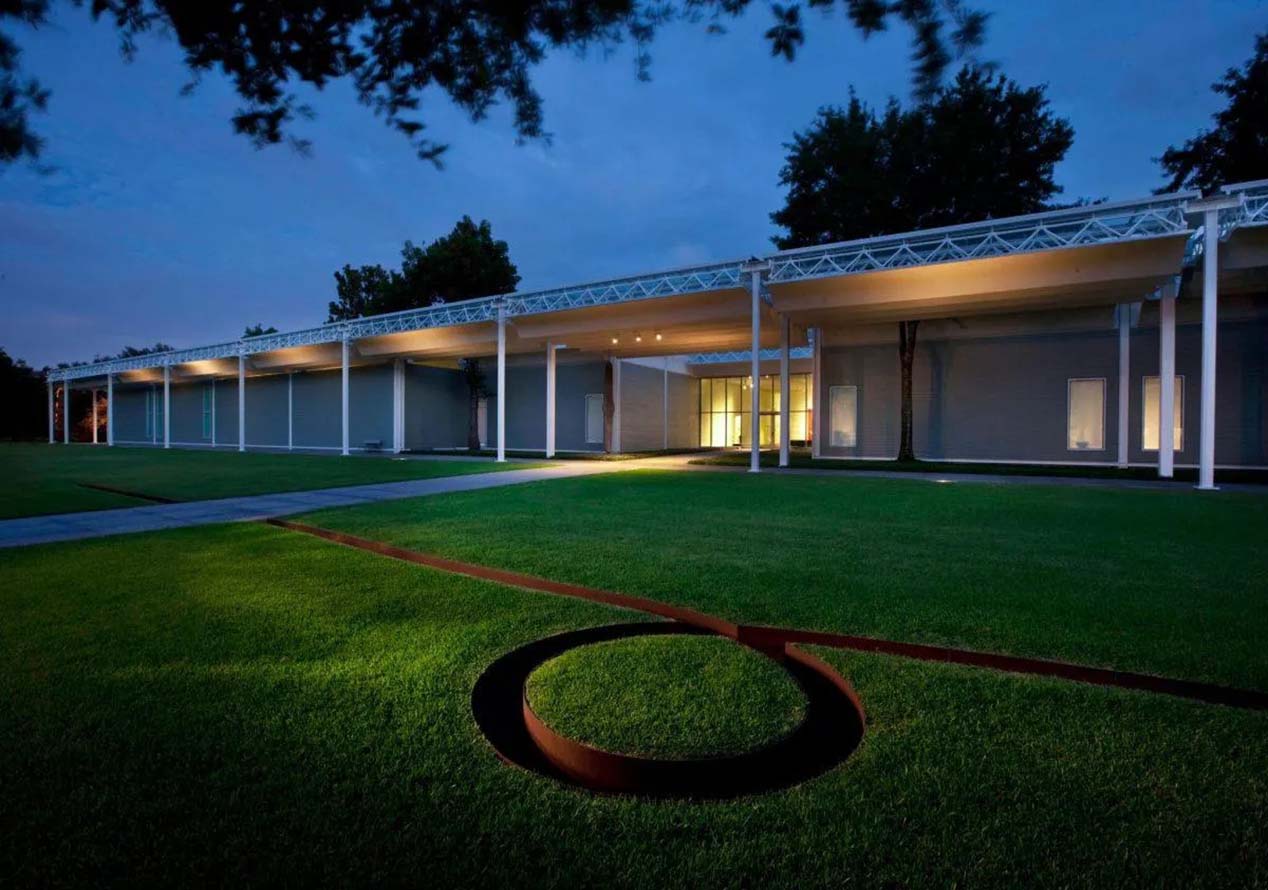When I first decided to visit Houston, my expectations were typical of any traveler heading to a major U.S. city. I anticipated visiting iconic places like the NASA Space Center, the Houston Museum District, and the bustling Galleria shopping mall. But as I delved deeper into the heart of Houston, I discovered a side of the city that’s often overlooked—its hidden gems. These secret spots offer an intimate glimpse into the true essence of Houston, far from the tourist crowds.
The Menil Collection: A Sanctuary of Art and Tranquility
One of the first places that captivated me was The Menil Collection. Located in a quiet residential neighborhood, this art museum isn’t hidden in the traditional sense, but it feels like a secret oasis in the midst of a bustling city. The Menil Collection houses a diverse range of artworks, from ancient to contemporary, all displayed in a serene, contemplative setting.
As I wandered through the galleries, I was struck by the museum’s unique approach to art curation. The spaces are uncluttered, allowing each piece to speak for itself without the distraction of excessive interpretation. It was in the Rothko Chapel, adjacent to the main collection, where I found myself particularly moved. The chapel’s minimalistic design and the deep, contemplative works of Mark Rothko created an atmosphere of profound stillness. I sat there for what felt like hours, absorbing the silence and the subtle interplay of light and shadow on the walls. It was a reminder that art doesn’t need to shout to make an impact—it can whisper and still be heard deeply.
The Buffalo Bayou Cistern: A Journey Beneath the City
Next on my list of hidden treasures was the Buffalo Bayou Park Cistern, a subterranean space that once served as a drinking water reservoir for the city. Discovered by chance during the renovation of Buffalo Bayou Park, this underground cistern is now a public art space and one of Houston’s most intriguing attractions.
Descending into the cool, damp environment of the cistern was like stepping into another world. The vast, cathedral-like space is filled with slender columns that stretch out into the darkness, their reflections creating an almost infinite sense of depth. The cistern’s acoustics are hauntingly beautiful, and during my visit, an art installation enhanced the experience with soft, ambient sounds that echoed through the space.
The tour guide’s stories about the cistern’s history and its rediscovery added to the sense of mystery. It was fascinating to learn how this forgotten piece of infrastructure had been transformed into a site for art and reflection. The Buffalo Bayou Cistern is a powerful reminder of how spaces, even those seemingly lost to time, can find new life and purpose.
Smither Park: A Mosaic Wonderland

In stark contrast to the dark, subterranean atmosphere of the cistern, Smither Park is a riot of color and creativity. This public park, located in the East End, is a living art installation. Every inch of it is covered in intricate mosaics, made from recycled materials ranging from broken dishes to old toys. It’s a place where community and art collide in the most joyful way.
Walking through Smither Park, I felt like I had stepped into a whimsical wonderland. The park’s centerpiece, the Memory Wall, is a stunning display of mosaic art that tells countless personal stories. Each section is created by different artists, yet they all come together in a vibrant, cohesive whole. The park also features a stage for performances, an amphitheater, and a meditation area, all decorated with mosaics.
What made Smither Park particularly special was the sense of community. On weekends, you can often find artists working on new pieces, welcoming visitors to watch and even participate. The park is a celebration of creativity and collaboration, and I left feeling inspired by the way art can bring people together.
Glenwood Cemetery: A Peaceful Retreat Amidst History
A cemetery might not be the first place you think of when exploring a city, but Glenwood Cemetery in Houston is unlike any other. Nestled along the banks of Buffalo Bayou, Glenwood is a beautifully landscaped, historic cemetery that offers not just a resting place for the deceased, but a peaceful retreat for the living.
As I wandered through the winding paths, I was struck by the beauty of the towering oak trees, the well-tended gardens, and the stunning monuments that mark the resting places of some of Houston’s most prominent figures. The cemetery’s serene environment made it easy to forget that I was in the heart of a major city. I spent time reflecting by the grave of Howard Hughes, the famous aviator and film producer, whose family has a significant presence here.
Glenwood Cemetery offers more than just a connection to Houston’s past; it’s a place where history and nature intertwine to create a space of quiet reflection. Whether you’re a history buff or simply looking for a peaceful place to escape the city’s hustle and bustle, Glenwood Cemetery is a hidden gem that offers a unique perspective on Houston’s heritage.
The Beer Can House: A Testament to Quirky Creativity
One of the most delightfully odd places I discovered in Houston is the Beer Can House. Located in a quiet residential area, this small home has been transformed into a work of folk art by its late owner, John Milkovisch. Over the course of nearly two decades, Milkovisch covered the exterior of his house with over 50,000 flattened beer cans, creating a shimmering, silvery façade that catches the light in a mesmerizing way.
Walking up to the Beer Can House, I couldn’t help but smile at the sheer audacity of the project. The house is a testament to one man’s quirky creativity and determination. Inside, the house is filled with more of Milkovisch’s handiwork, from beer-can-lined walls to intricate aluminum sculptures. It’s a place that defies convention and celebrates the joy of making something truly unique.
The Beer Can House is a reminder that art doesn’t have to be serious or grand to be meaningful. Sometimes, it’s the eccentric, offbeat projects that bring the most joy and leave the longest-lasting impressions.
The Orange Show: A Monument to One Man’s Vision
Just a short drive from the Beer Can House is another of Houston’s unconventional treasures: The Orange Show. This outdoor art environment was built by a Houston postal worker named Jeff McKissack, who spent over 20 years constructing it by hand. The Orange Show is a maze-like structure made of found objects, including tiles, metal, and concrete, all painted in vibrant oranges and yellows. McKissack’s love for oranges—and his belief in their health benefits—inspired the entire project.
Exploring The Orange Show felt like stepping into the mind of its creator. The site is filled with quirky features like a wishing well, a pond, and a stage for live performances, all connected by winding pathways and staircases. It’s both a celebration of individuality and a tribute to the power of imagination. The Orange Show is now managed by the Orange Show Center for Visionary Art, which also oversees Smither Park, making it part of a larger effort to preserve Houston’s folk art legacy.
Asia Society Texas Center: A Cultural Bridge

For a more refined, but still relatively under-the-radar experience, the Asia Society Texas Center is a cultural treasure that shouldn’t be missed. This beautiful building, designed by Japanese architect Yoshio Taniguchi, serves as a bridge between East and West, offering exhibitions, performances, and educational programs that celebrate Asian art and culture.
During my visit, I was captivated by the thoughtful design of the building itself, which seamlessly blends modern architecture with traditional Asian elements. The galleries featured a diverse range of exhibitions, from contemporary Asian-American art to ancient artifacts. What struck me most was the center’s commitment to fostering cross-cultural understanding through its programs and events.
The Asia Society Texas Center is a place of quiet reflection and learning, where visitors can immerse themselves in the rich tapestry of Asian cultures. It’s a hidden gem in Houston’s Museum District, offering a unique perspective on the global connections that shape our world.
Houston is a city that reveals itself slowly, and its true charm lies in the unexpected places you stumble upon when you venture off the beaten path. From the tranquil beauty of Glenwood Cemetery to the quirky creativity of the Beer Can House, these hidden gems offer a deeper understanding of the city’s character. They remind us that Houston is not just a sprawling metropolis, but a place where history, art, and culture come together in surprising and delightful ways.
As I left Houston, I felt like I had uncovered a side of the city that many visitors miss—a side that’s rich in stories, creativity, and quiet beauty. If you find yourself in Houston, I encourage you to take the time to seek out these secret treasures. They may not be as famous as the city’s top attractions, but they offer experiences that are just as meaningful, if not more so. And who knows? You might just discover a hidden gem of your own.



